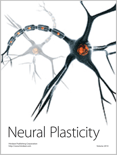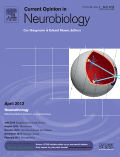
IBRO Neuroscience Reports
Scope & Guideline
Shaping the future of brain science, one report at a time.
Introduction
Aims and Scopes
- Neurodegenerative Diseases:
Research on mechanisms, treatments, and experimental models related to neurodegenerative diseases like Alzheimer's, Parkinson's, and multiple sclerosis is a core focus, highlighting both therapeutic strategies and molecular insights. - Neurodevelopment and Plasticity:
Studies investigating the processes of neurodevelopment, neuroplasticity, and their implications for cognitive function and behavior are prevalent, reflecting the journal's commitment to understanding how neural circuits adapt and change over time. - Pain and Neuroinflammation:
The journal covers research on chronic pain mechanisms and the role of neuroinflammation, presenting studies that explore therapeutic interventions and the underlying biological processes. - Behavioral Neuroscience:
Papers addressing the relationship between neural mechanisms and behavioral outcomes, including studies on mood disorders, anxiety, and the effects of various interventions on behavior, are a significant part of the journal's content. - Neuropharmacology:
A focus on the pharmacological aspects of neuroscience, including the effects of drugs and natural compounds on neural function, neuroprotection, and treatment of psychiatric disorders is evident. - Neuroimaging and Biomarkers:
Research employing neuroimaging techniques and the identification of biomarkers for neurological and psychiatric diseases is emphasized, showcasing advancements in diagnostic and therapeutic approaches.
Trending and Emerging
- Neuroimmunology:
There is an increasing focus on the interplay between the immune system and the nervous system, with studies exploring how neuroinflammation affects neurological disorders and potential therapeutic approaches. - Personalized and Precision Medicine:
Research aiming to tailor therapies based on individual genetic, molecular, and environmental factors is gaining traction, reflecting a broader trend in healthcare towards personalized treatment strategies. - Neurotechnology and Brain-Computer Interfaces:
Innovations in neurotechnology, including brain-computer interfaces and neurofeedback, are emerging as significant themes, indicating a shift towards integrating technology with neuroscience for rehabilitation and enhancement. - Mental Health and Well-being:
An increased emphasis on mental health research, particularly in relation to neurodevelopmental disorders, stress, and resilience, highlights a growing recognition of the importance of psychological well-being in neuroscience. - Environmental Neuroscience:
Research exploring the impact of environmental factors on brain health and behavior is on the rise, reflecting a broader societal interest in how lifestyle and environmental changes influence neurological conditions.
Declining or Waning
- Traditional Pharmacological Approaches:
Research focused solely on traditional pharmacological treatments has seen a decline, as there is a growing emphasis on integrative and alternative approaches, including dietary and lifestyle interventions. - Basic Neuroanatomy Studies:
Studies that focus exclusively on basic neuroanatomy without integrating functional or translational aspects have become less frequent, as the field moves towards more applied and clinically relevant research. - Neuroscience in Isolation:
Papers that do not incorporate interdisciplinary approaches or collaborations with other fields such as genetics, molecular biology, or computational methods are less common, reflecting a trend towards comprehensive research methodologies. - Animal Models with Limited Contextual Relevance:
Research using traditional animal models without clear implications for human health or without translational relevance is declining, as there is a push for models that better mimic human conditions.
Similar Journals

INTERNATIONAL JOURNAL OF NEUROSCIENCE
Pioneering Research for a Brighter Neuroscience FutureThe INTERNATIONAL JOURNAL OF NEUROSCIENCE, published by TAYLOR & FRANCIS LTD, stands as a vital resource in the field of neuroscience since its inception. With a proud history of publication from 1970 to 2024, this journal is committed to advancing knowledge in various domains of neuroscience, from fundamental research to clinical applications. It is indexed with an ISSN of 0020-7454 and an E-ISSN of 1563-5279, reflecting its wide reach and recognition. The journal maintains a respectable position in the academic landscape, categorized as Q2 in Medicine (miscellaneous) and Q3 in Neuroscience (miscellaneous) as of 2023, signifying its relevance among researchers and professionals. Although it currently does not offer open access, the journal remains a significant platform for disseminating groundbreaking research, thereby fostering collaboration and innovation within the neuroscience community. Located in the United Kingdom, the journal aims to bridge gaps in neuroscience knowledge, making it an essential reading for students, professionals, and researchers dedicated to unraveling the complexities of the nervous system.

Frontiers in Neuroscience
Bridging knowledge gaps in neuroscience.Frontiers in Neuroscience, published by FRONTIERS MEDIA SA, is a premier open-access journal dedicated to advancing our understanding of the nervous system through innovative and rigorous research. Since its inception in 2007, this journal has become an influential platform for researchers, featuring a diverse range of topics across various subfields of neuroscience. With its current ranking in the second quartile (Q2) of the category "Neuroscience (miscellaneous)" and a commendable position of #40 out of 113 in general neuroscience according to Scopus, Frontiers in Neuroscience is recognized for its high-impact contributions. The journal promotes free access to scholarly work, ensuring that cutting-edge neuroscience studies reach a global audience and foster collaboration across disciplines. By bridging gaps in knowledge and facilitating the exchange of ideas, Frontiers in Neuroscience plays a pivotal role in addressing the complexities of the nervous system and its effects on behavior, cognition, and health.

NEURAL PLASTICITY
Elevating the Standards of Neurological ResearchNEURAL PLASTICITY is a distinguished open access journal published by Hindawi Ltd, focusing on innovative research in the field of neurology and neuroscience. With its ISSN 2090-5904 and E-ISSN 1687-5443, this journal has been a vital resource for researchers since its inception in 1989, providing high-quality content that bridges the gap between theoretical and clinical aspects of neural plasticity. The journal is recognized with a 2023 category quartile ranking of Q2 in both Neurology and Clinical Neurology, confirming its relevance and impact within the academic community. NEURAL PLASTICITY is ranked 85th out of 400 in Medicine: Neurology (Clinical) and 46th out of 192 in Neuroscience: Neurology on Scopus, placing it in the 78th and 76th percentiles respectively. This makes it a significant platform for publishing cutting-edge research that informs clinical practices and enhances our understanding of neural mechanisms. Researchers, professionals, and students can access a wealth of studies that contribute to the evolving discussion on neural adaptation, recovery, and therapeutic interventions, making NEURAL PLASTICITY an essential addition to the libraries of those dedicated to advancing neurological science.

ANNALS OF NEUROLOGY
Your Gateway to Cutting-Edge Neurology ResearchANNALS OF NEUROLOGY, published by Wiley, stands as a leading journal in the field of neurology, renowned for its rigorous peer-reviewed articles that contribute significantly to the understanding of neurological disorders and advances in clinical practices. With an impressive impact factor and ranked Q1 in both neurology and clinical neurology categories, this journal positions itself among the top repositories of cutting-edge research, indexed in Scopus with exemplary ranks in the 98th and 97th percentiles respectively. Since its inception in 1977 and with a commitment to excellence extending to 2024 and beyond, ANNALS OF NEUROLOGY aims to disseminate groundbreaking studies and foster dialogue within the academic community, making it an essential resource for researchers, healthcare professionals, and students dedicated to neurology. Although it does not currently offer open access, its accessibility through institutional subscriptions facilitates widespread scholarly engagement.

Brain Communications
Bridging the Gap Between Brain Function and Psychiatric DisordersBrain Communications is an esteemed, open-access academic journal published by Oxford University Press since 2019, focusing on the dynamic field of neuroscience. With a dedicated ISSN and an E-ISSN of 2632-1297, this journal aims to address the intricate relationships between brain functions, psychiatric disorders, and neurobiological mechanisms. The journal stands out in the academic realm, holding a prestigious Q1 ranking across several categories, including Biological Psychiatry, Cellular and Molecular Neuroscience, Neurology, and Psychiatry and Mental Health for 2023. Notably, it has also secured impressive Scopus ranks in various neuroscience and psychiatry fields, evidencing its commitment to high-quality research. With an impact factor reflective of its growing influence, Brain Communications provides accessible research findings to professionals, researchers, and students alike, fostering a deeper understanding of complex neurological phenomena. This innovative journal is pivotal for anyone involved in advancing knowledge in neuroscience and mental health.

Experimental Neurobiology
Connecting Researchers to Transform NeurobiologyExperimental Neurobiology is a prominent academic journal published by the Korean Society for Brain and Neural Science and the Korean Society for Neurodegenerative Disease, dedicated to advancing the field of neurobiology. With an ISSN of 1226-2560 and an E-ISSN of 2093-8144, this journal plays a pivotal role in disseminating innovative research findings from 2015 to 2024. The journal has established its relevance within the scientific community, achieving a Q3 ranking in Cellular and Molecular Neuroscience and a Q2 ranking in Neurology (Clinical) as of 2023. Researchers exploring the complexities of neurobiology will find a platform for their findings, as it currently holds a rank of #182 in clinical neurology and #73 in cellular and molecular neuroscience within the Scopus database. Although open access is not presently available, the journal remains committed to academic excellence and provides a critical resource for those engaged in the study of neurological diseases and mechanisms.

ACTA NEUROBIOLOGIAE EXPERIMENTALIS
Illuminating the Complexities of Medicine and MindACTA NEUROBIOLOGIAE EXPERIMENTALIS, an esteemed journal published by the Nencki Institute of Experimental Biology in Poland, has been a pivotal platform for the dissemination of research in the fields of medicine and neuroscience since its inception in 1970. With an ISSN of 0065-1400 and an E-ISSN of 1689-0035, this journal has consistently aimed to contribute to the understanding of neurobiological phenomena, cementing its status within the academic community. Despite its current categorization in the Q3 and Q4 quartiles for Medicine and Neuroscience respectively, ACTA NEUROBIOLOGIAE EXPERIMENTALIS continues to uphold rigorous scientific standards, providing an invaluable resource for researchers, professionals, and students alike. As an essential scholarly outlet, it encourages the exploration of groundbreaking findings and clinical applications in neurobiology, making it an attractive choice for those eager to advance their understanding of this intricate field.

Eneurobiologia
Exploring Neural Complexities, One Study at a TimeEneurobiologia is an esteemed open-access journal published by UNIV VERACRUZANA, INST INVESTIGACIONES & EDUCACION, dedicated to advancing research in the vibrant field of neurobiology. With its launch in 2010, the journal aims to disseminate high-quality, peer-reviewed research articles that explore the complexities of neural systems, neurodevelopment, and neurodegenerative disorders. By providing a platform for both established researchers and emerging scholars, Eneurobiologia fosters interdisciplinary collaboration and knowledge exchange within the scientific community. Its open-access model ensures that valuable findings are accessible to a global audience, promoting the widespread application of neurobiological research. As a crucial resource for students, professionals, and researchers alike, Eneurobiologia plays a pivotal role in shaping the future of neurobiological studies and enhancing our understanding of the brain and nervous system.

Neurochemical Journal
Exploring the Frontiers of NeurochemistryNeurochemical Journal, published by MAIK NAUKA/INTERPERIODICA/SPRINGER, focuses on the dynamic and rapidly evolving field of neurochemistry, providing insights into cellular and molecular neuroscience. Despite the discontinuation of its coverage in Scopus, the journal remains a valuable resource for researchers and professionals seeking to explore the biochemical underpinnings of neural function and pathophysiology. With an ISSN of 1819-7124 and an E-ISSN of 1819-7132, the journal aims to publish rigorous research articles, reviews, and notes that push the boundaries of our understanding of neurochemical processes. With a ranking that places its subjects in the lower quartile of their respective fields, Neurochemical Journal offers a platform for innovative studies and discussions among up-and-coming scientists, making it a crucial outlet for advancing the discourse in this critical area of biomedical research.

CURRENT OPINION IN NEUROBIOLOGY
Fostering Scholarly Dialogue in NeuroscienceCURRENT OPINION IN NEUROBIOLOGY, published by CURRENT BIOLOGY LTD, stands as a premier interdisciplinary journal in the field of neuroscience, specifically focusing on the latest advancements and emerging trends in neurobiology. With an impressive impact factor bolstered by its classification in Q1 in the Neuroscience (Miscellaneous) category and a notable Scopus rank of #16 out of 113 within General Neuroscience, this journal serves as an essential resource for academics, professionals, and students alike. Since its inception in 1991, CURRENT OPINION IN NEUROBIOLOGY has consistently provided insightful reviews covering various aspects of neurobiological research, thereby enhancing our understanding of complex neural processes. While the journal is not open access, it remains committed to disseminating high-quality research and fostering scholarly dialogue, making it a critical platform for those seeking to keep abreast of the dynamic developments in neuroscience.